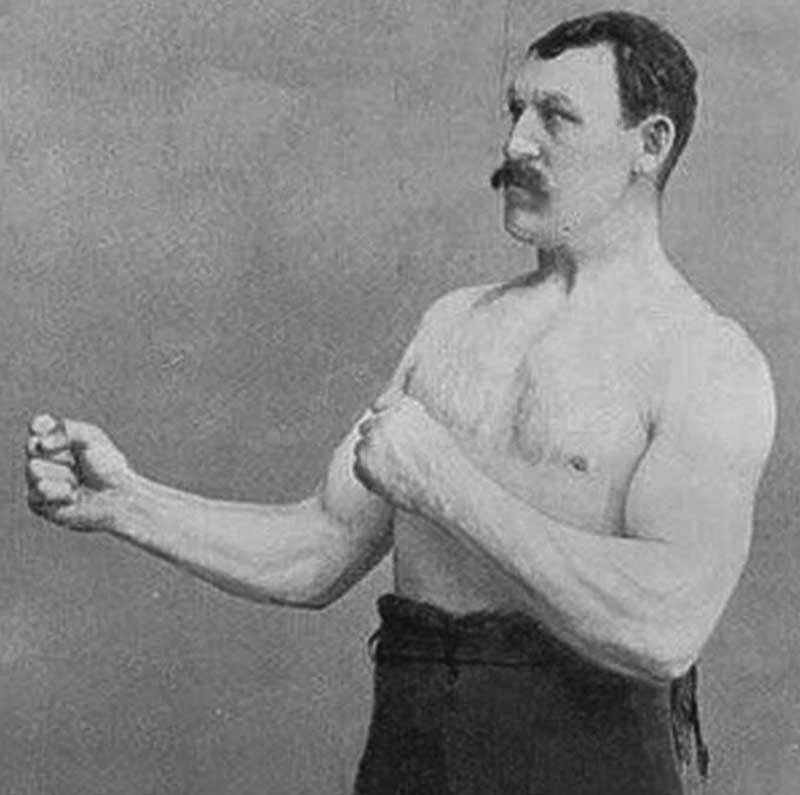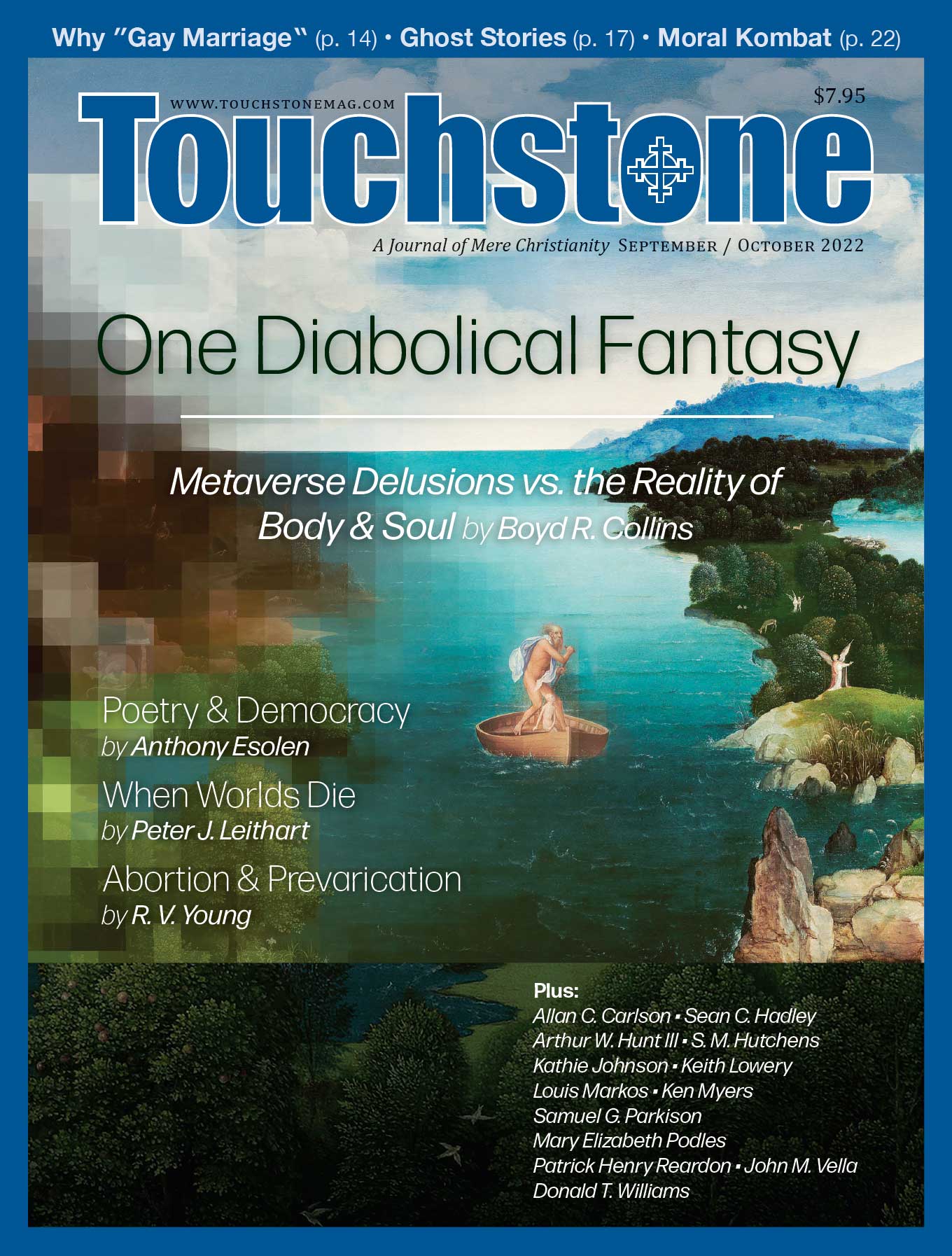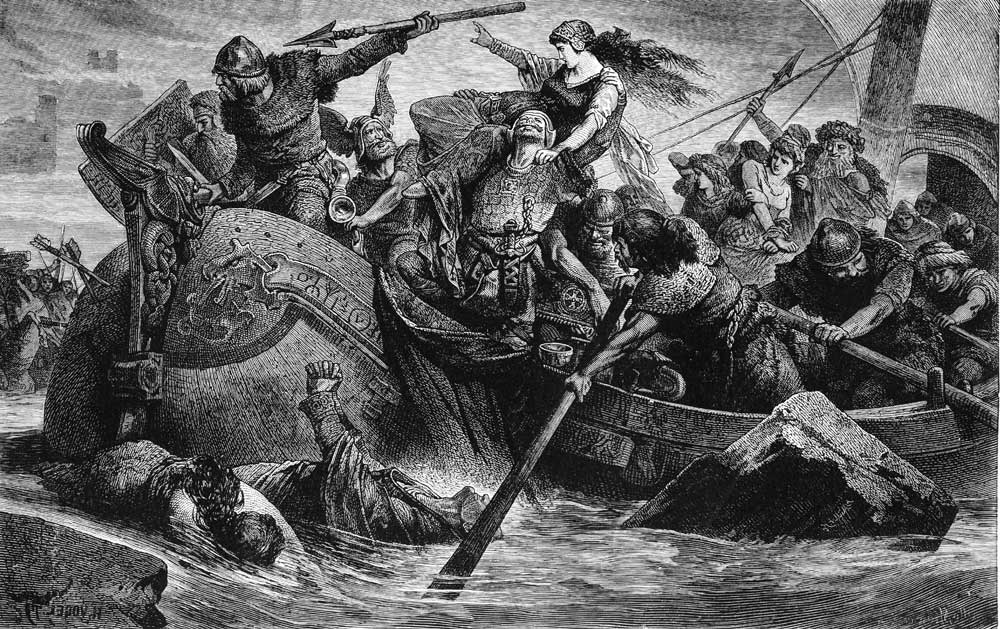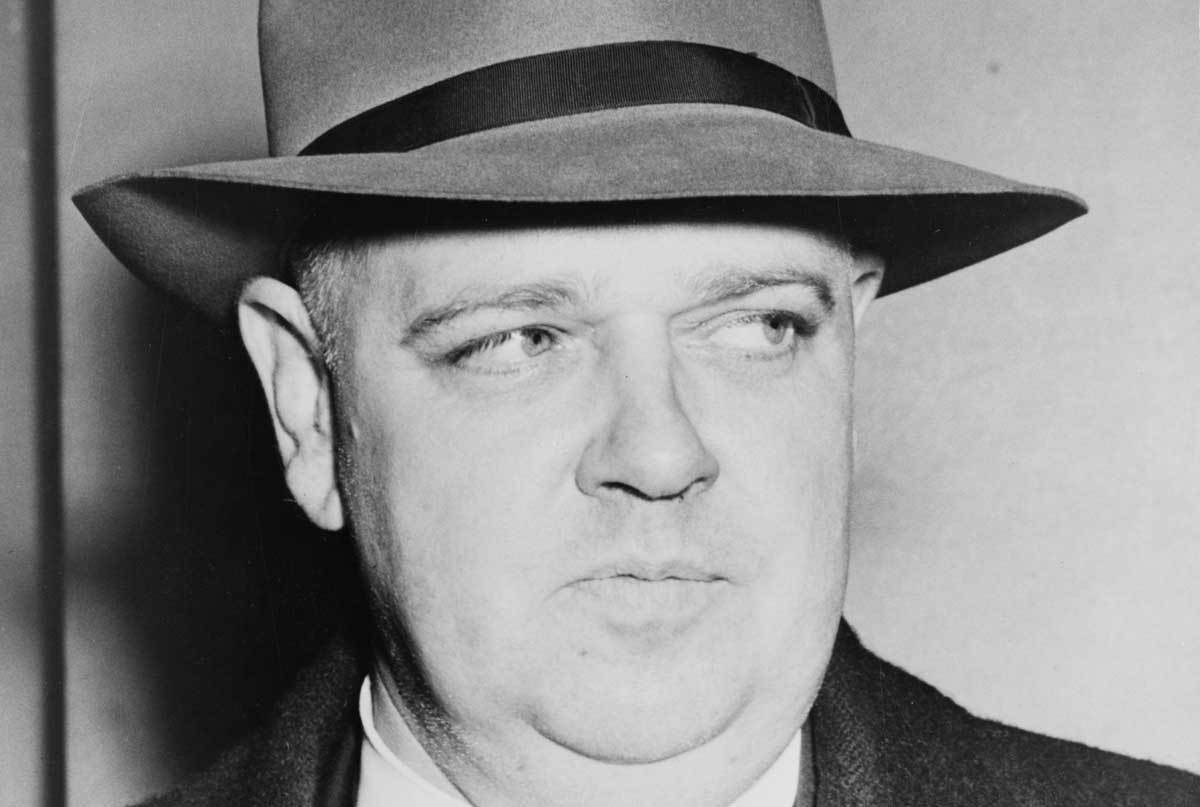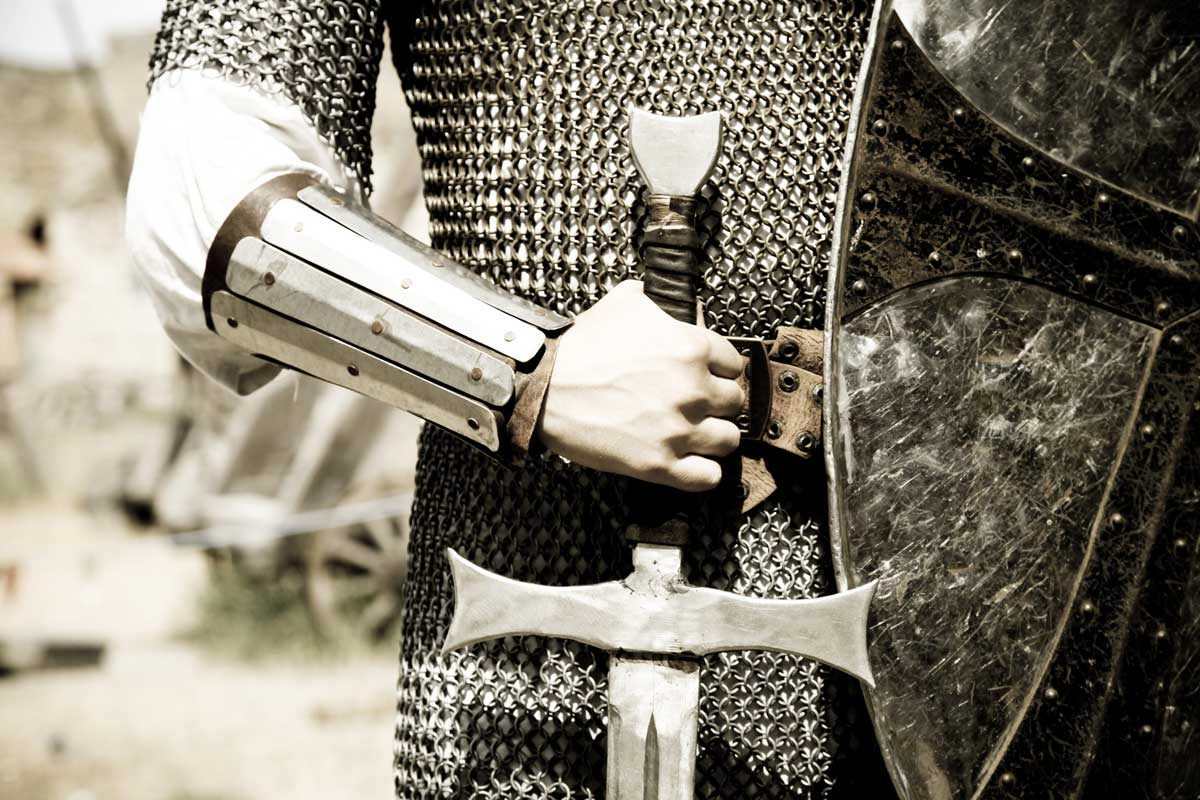Moral Kombat
Lessons from Early Christians . . . and from Our Great-Grandparents
For the uninitiated, Mortal Kombat—with a t and a K—is the most successful fighting game franchise in video-gaming history. Launched in 1991, eleven versions have sold 75 million units. Three successful feature films have also appeared.
Mortal Kombat is also routinely ranked as the goriest video game ever. It is set in a fictional universe where eighteen realms created by the elder gods send out warriors to battle each other. The defining feature of this game is the Finishing Move, in which the victor ends a match by killing the defeated, defenseless opponent. Sometimes the victor turns into an animal that proceeds to rip apart the loser. One is reminded here of the Roman Coliseum, where hungry lions and hyenas tore asunder criminals, Christians, and other enemies of public order.
Giving a better illustration, one Mortal Kombat enthusiast describes the Finishing Move that philosopher Immanuel Kant would use if he were a warrior in the game: “Kant rips open the opponent’s head, sucking out the part of his opponent’s brain responsible for thought and reason.” Alas, so much for the Categorical Imperative.
At another level, though, there is an ethical order to Mortal Kombat. Each realm has a distinctive culture, and some of them (such as Earthrealm and Edenia) are attractive. Mortal battles to the death defend such realms from wicked invaders who would destroy them. Facing ruthless fighters, no quarter—or mercy in battle—is asked, and none is given. As the example of Kant suggests, a liberal tolerance of rival worldviews is completely absent.
Pornography Rampant
Once upon a time in America, Christians engaged openly and successfully in a form of Moral Kombat—no t here—where absolutes of a similar sort also ruled. The date was about 1880, and the specific subject was pornography.
We moderns may think we are unique in facing this subject, but erotic pictures and lustful books are nothing new. To choose one earlier example, when the Puritan regime of Oliver Cromwell in England collapsed in the 1660s, French books with graphic illustrations quickly crossed the Channel. Translated titles included Venus in the Cloister, The Crafty Whore, The School of Venus, Sodom, and Erotopolis, along with Ovid’s classic Artes Amatoria.
In the years immediately following the American Civil War, something similar occurred. Sometimes called “the first modern war,” this campaign deeply disrupted local cultures and customs. By the tens of thousands, demobilized soldiers torn from their mostly rural homes flowed into the cities. Obscene books and pictures appeared in abundance. (Note: By this time, photography was over three decades old, and while the first picture taken appears to have been of a man sitting in a chair, the second was most likely that of a naked woman in an erotic pose.)
In New York City, according to an 1866 report of the Young Men’s Christian Association (YMCA):
[T]he traffic in these [erotic materials] is most extensive. They are to be obtained at very many news stands. . . . At one place, on a principal thoroughfare, there are openly exposed for sale two vile weekly newspapers, which can be purchased at ten cents a copy, and more than fifty kinds of licentious [illustrated] books.
For those showing an interest in these items, proprietors produced a catalogue “of a large number much more vulgar and atrocious, illustrated with the most obscene cuts.” The report concluded: “The debasing influence of these publications on young men cannot be overestimated.” Elsewhere, obscene books acquired through the mail found their way into schools.
For us moderns, an immediate question becomes: Were these items truly pornographic? Well, some of them survive, and as the author of the Playboy Press’s A History of Sex reports, they were. “Even today,” he writes, “they have the power to arouse.”
Victory in Moral Kombat
The YMCA, then afire with an evangelical fervor for moral improvement, launched societies that would combat such vice. These Christian activists were fully aware of the addictive nature of porn, including its effects on the youthful brain. As Elizabeth Blackwell, the first American woman to earn a modern medical degree, explained: “The danger arising from vicious literature of any kind cannot be overestimated by parents. The permanent and incalculable injury which is done to the young mind by vicious reading, is proved by all we know about the structure and methods of growth” of the human brain. As with all addictive forms, there was no such thing as a little bit of harmless pornography, especially among boys.
The most effective and persistent of these cultural warriors was the now mostly infamous Anthony Comstock. In a legal sense, he, too, gave no quarter to the publishers of obscene books and pictures. As he wrote:
The infidel expects to extract from this world the full enjoyment of every lust of his nature; he seeks and expects nothing in the future, he dies as dies the beast. . . . We find him, then, in his natural element, when he defends the unbridled sway of his desires and opposes all legal restraints.
In another essay, entitled “Vampire Literature,” Comstock summoned Christians to protect children of all ages: “Save our youth from this fetid blast of corruption which is being sent out by the fiery greed of thoughtless, reckless, or criminal authors and publishers.”
The remarkable fact is how effective was this late-nineteenth-century campaign against pornography. In 1873, Christian anti-vice societies won a federal law prohibiting the import and distribution through the mail of “every obscene, lewd, or lascivious [item], and every filthy book, pamphlet, picture, paper, letter, writing, print, or other publications of an indecent character.” State laws banning the sale of such items followed. In 1874, the YMCA in New York reported the seizure and destruction of eight-and-a-half tons of bound books, 200,000 pictures and photographs, 6,250 microscopic pictures, 1,000 photographic plates, seven tons of stereotype plates for printing books, and 120,000 circulars and catalogues. Also seized were the names of 6,000 dealers nationwide.
Criminal penalties could be imposed; almost all judges, federal and state, were sympathetic to the anti-vice cause; and several thousand pornographers went to prison, usually for one to four years. The conviction rate was stunning. In one year, for example, 156 men stood trial in New York State on charges of obscenity; 155 of them were convicted.
Not so remarkably, the trade dried up. In 1872, the New York “porn library” counted 144 distinct titles; by 1880, only two were still in print. The next year, 1881, Christian cultural warriors could report the seizure of only twenty pounds of dirty books and a mere 25 lewd pictures. Up in New England, the Watch and Ward Society—the officers of which included the presidents of Yale, Brown, Amherst, and Dartmouth Colleges—reported in 1885 that the trade there in obscene literature had been “substantially suppressed.” At the nineteenth century’s end, the society declared that “nothing further” was needed except for “constant watchfulness.”
As late as 1915, the progressive publication The New Republic praised this work generally, and Anthony Comstock in particular. The editorial concluded: “No one who does not know how such things were thrust on young people some forty or fifty years ago, and how difficult and risky this trade has been made nowadays, can realize the vast amount of good Mr. Comstock has accomplished.”
Alas, to contemporary ears, this story seems to have come out of an alternate universe or perhaps a bizarre video game. So conditioned are we—intellectually, morally, and legally—to the claims of atomistic liberalism that most people today can see in this tale only awful transgressions of individual rights and freedoms. How dare the anti-vice societies seek to impose their narrow morality on everyone! How dare they seek to dictate to self-actualizing persons what they can and cannot read or look at! How dare they destroy books and pictures! How dare they press a wizened vision of sexuality on an entire people! Even among the social conservative activists of today, the figure of Anthony Comstock—if he is known at all—is a huge embarrassment.
A New Game: Shocking the Christians
This circumstance actually comes after a century of another game that might be called “Shocking the Christians.” For those taking part, it has always been great fun. It began among the book publishers out East. As early as 1909, Boston’s Watch and Ward Society lamented that much of the new fiction appearing “is depressing; it is unbelieving; it seems to be written in a spirit of revolt against the old ideals of chivalry and chastity.” Exemplary in this regard would be D. H. Lawrence’s novel Lady Chatterley’s Lover, which sparkeda censorship disputethat actually ran for over thirty years. In explicit detail and with copious employment of four-letter words, the book told of a sexual relationship between an upper-class English woman and a working-class man. What a thrill it was to read a pirated edition, to taste sexual liberation, and to anger dour, frowning Christians!
During the 1950s, rock-and-roll came along, with suggestive language and swaying hips that were denounced by preachers across the land. (Ironically, when the great early rockers Elvis Presley, Jerry Lee Lewis, Carl Perkins, and Johnny Cash actually met for an impromptu session at Sun Records in 1956, they sang mostly Gospel tunes, for they were all raised as Christian boys. However, the future lay along the lines of “Great Balls of Fire,” not rockabilly renditions of “The Old Rugged Cross.”) Soon, more intense variations of this music emerged, such as heavy metal, grunge, and hard rock. Shocking the Christians was always part of the fun.
Then came the Summer of Love at Woodstock and beyond. Chastity, fidelity, and one-flesh marital unions were scorned and ridiculed. The linkage of sexuality to the appearance of babies unraveled. Again, the Christians were shocked. A little later came the acceptance and then celebration of homosexuality, with transgenderism not far behind. Shocked, and shocked again.
Along the way, even the leaders of the so-called mainline Protestant churches joined in the fun: Shocking the Christians became Shocking the Pewsitters. Eventually, tattooed pastors with foul mouths and public sexual appetites became ecclesiastical celebrities, especially featured at youth gatherings. Transgender “thems” became bishops.
Indeed, as an aside and returning briefly to the realm of Mortal Kombat, note how that game has a curious twist. In some cases, the defeated warrior transforms into a baby before the victor can unleash the Finishing Move, and under the game’s rules the life of the infant must be spared. Alas, the unwanted baby enjoys better prospects in that gruesome digital world than he does in the real America, and some of its churches.
Porn Returns, Deadlier than Ever
By now, though, the game of Shocking the Christians is about over. The opportunities for startling acts are pretty well exhausted. If, say, a mainline presiding bishop announced tomorrow that, henceforward, fetal blood would replace wine in the eucharist as atonement for patriarchal misdeeds, few would be shocked or even surprised, for this does follow logically from a reverence for abortion.
As Shocking the Christians proceeded, restraints on pornography unraveled as well, and—with one exception—they have now completely disappeared. Indeed, the internet quickly moved the hard-core porn industry out of the back alleys in the shady parts of town into potentially every home: an extraordinary transformation. Some estimates suggest that 40 percent of all internet hits are now porn-related. In 2019, PornHub—a leading but far from the only source of pornographic films—counted 42 billion hits. Covid-19 restrictions brought on “an unprecedented increase” in internet porn consumption, ranging from 40 to 90 percent in the nations surveyed.
So grows the perverse underside of what Fr. Pierre Teilhard de Chardin famously labeled the noosphere, that band of human intellectual energy now said to be encircling the globe. Viewed from below, though, this presumed great step forward in human evolution is rather a new descent into a familiar darkness.
It would be good if I could report that recent research shows that the fears of yesteryear’s anti-vice crusaders regarding pornography’s negative social effects were overwrought. Of course, I cannot. Surveys of adults suggest that nearly half of American households report porn-in-the-home to be troubling family life. Sixty percent of divorces involve accusations of “obsessive interest in porn websites” by one or both partners. For specifics, I am told, one can ask any pastor who does counselling.
Among teenagers—those for whom the Christian cultural warriors of old were primarily concerned—the contemporary record is most grim. Supposed barriers to the worst forms of pornography are easily swept aside by tech-savvy and curious boys and girls. And every study reconfirms that access by the young to pornography hinders proper sexual development, lowers levels of self-esteem, heightens the risks of clinical depression and suicide, and disrupts the formation of healthy friendships between the two sexes. Moreover, as Dr. Blackwell warned 140 years ago, the exposure of teenagers to “vicious” materials still causes long-term injury to the structure, chemistry, and operation of youthful brains. Such matters surely contribute to the record-low marriage and birth rates now found in this land: a massive retreat from family formation.
In short, nothing has changed—except for an expansion of the scope of the problem and our failure as a political commonwealth to do anything significant that would prohibit or even restrain this assault on the lives and prospects of the young.
Ways to Fight—If There’s the Will
Then again, perhaps it is impossible at this point to do much about it. Pandora’s box of obscenities is open; there is no way to regulate the pornographic noosphere. Three factors, though, suggest otherwise.
First, in one area at least—the suppression of child pornography—strong controls continue to exist and function. Here, there are tools to track down and arrest those who create, distribute, and possess such images, on the internet and elsewhere. While there are differences between the realms of adult and child porn, what is done against the latter suggests what could be done against the whole industry.
Second, the record of Big Tech over the last few years shows beyond any doubt that the censorship of pictures, films, and words deemed “deplorable” and “undesirable” on the World Wide Web is both possible and effective. It appears that if the will were there, the pornographic noosphere could be crippled.
And third, the prospect of doing hard time in jail can powerfully concentrate the mind. Between 1872 and 1940, the imprisonment of a few thousand American pornographers was sufficient to curtail the industry. The risks became too great, and most would-be publishers found other work.
Would twenty-first-century American courts allow such an infringement on “free” minds? Would the tens of millions of adult Americans who currently enjoy this form of release and/or addiction accept the imperative of protecting the young? Is a political coalition to pursue such an end possible in these days? I leave the answers to such questions to the court watchers, political scientists, and futurists. As a historian, though, I emphasize that the scourge of pornography has been confronted and defeated before. It was not easy. It took culture warriors of steel, ready to face the Darkness head-on. Some people had to go to prison. Still, it happened. That is the lesson—perhaps now unwanted—taught by our great-great-grandparents.
When Christians Did the Shocking
Another strategy to protect a healthy family order in a secular age comes from the early Christians. Here, the tactic or reality of shock returns. The persecution of Christian believers within the Roman Empire began within a few years of the death and Resurrection of Christ: the record of Saul of Tarsus and the experience of Peter in Rome are clear examples. However, for over two hundred years, those actions were sporadic, local, and uncoordinated, and the count of martyrs was relatively small. It was only in a.d. 250 that the official machinery of imperial Rome set out to crush this religious sect.
By then, the number of Christians was no longer insignificant, having climbed to well over one million. The danger facing the empire from them was twofold. First, the Christians made universalist claims. Where the Jews, for example, adhered to a seemingly typical local and tribal god, the Nazarene sect sought to convert all men, everywhere, to its creed. This was something new, with potentially perilous consequences. Second, these Christians refused to perform the minimal act deemed necessary to preserve social order and civil peace: throw a pinch of incense onto the altar honoring the emperor as divine. Belief was not really expected here, only the action: it was, in Roman minds, something like reciting the Pledge of Allegiance in our land today.
It was this symbolic act that Christians refused to do. And their behavior became scandalous, shocking, to the Roman public. One wellborn presbyter in Smyrna, Pionius, was arrested in 250 for refusing to make the required obeisance to the Emperor Decius. In the remarkable, probably eyewitness account of his martyrdom, Pionius faced the authorities and said: “Out of obedience to my Master I prefer to die rather than disobey his teaching.” When a sincerely troubled official reminded him that “it is good to be alive and to see the morning light,” Pionius replied that “it is good to be alive, but that which we desire is even better. Yes, the light, but the true Light!” Warned that he could be burned alive, Pionius responded: “It is much worse to burn after you have died!” When another Christian on trial with him, a woman named Sabina, laughed at the possibility of being burned alive, a shocked magistrate asked, “You laugh?” She said, “If God wishes it, yes; for we are Christians. Whoever trusts in Christ will laugh unhesitatingly with everlasting joy.” Pionius died on a fiery cross.
Still more shocking to Roman sensibilities was the example of the arrest and testimony of Perpetua, which has also come to us in reliable, eyewitness form. She was the favored daughter of a prominent family, who had married well and had given birth to a male child. Holding to the highest of traditional Roman female ideals, she rejected the use of a wetnurse and breastfed her own baby. Alas, along with a brother and perhaps her mother, she also converted to Christianity. Abandoned by her pagan husband and arrested, she refused to honor the emperor. Her frantic father appealed to her: “Perform the sacrifice—have pity on your infant.” The Roman governor of the province appealed to healthy family sentiments as well: “Spare your father’s white hair, spare the infancy of your boy! Perform the rite for the safety of the Emperor!” Perpetua replied, “I will not do it. . . . I am a Christian.” She died in the arena, torn apart by beasts.
Shocking Family Values
On another level, Christian family values also shocked the Romans in a different way. On matters of sexual ethics, the remarkable Christian innovation was the insistence on equality between men and women: for both sexes, chastity before and outside of holy marriage, and fidelity within, were required. In the human record, this was something radically new: there was no double standard. Moreover, Christian marriage was meant to be indissoluble, with the common Roman practice of easy divorce again rejected. For obvious reasons, pagan Roman men could understand neither turn.
On top of this, the Christians actively denounced what might be called “customary” sexual behaviors of the late Roman Empire. Infanticide was a common practice, particularly with girl babies. We know this from lopsided ratios found in the Roman population: up to 140 male adults for every 100 females. Christians denounced such acts and rescued exposed babies when they could, rearing them as their own.
Abortion was another frequent practice, evidenced by the surviving tool kits of this trade: the usual spikes, hooks, and knives. The use of contraceptive devices and potions was another common Roman behavior. The Christians rejected both abortion and contraception, welcoming babies as gifts from God.
Homosexuality was culturally accepted as well, and it was widespread in the great imperial cities. “Greek love”—sexual acts between men and boys—was found especially among Roman elites. As demonstrated in the Epistles, the Christians denounced these behaviors, too.
And because of these shocking choices, the number of Christians grew, and grew rapidly—through conversions, the fruitfulness of Christian marriages, and better care of children. Partly recognizing simple demographic realities here, imperial officials ended the formal persecution of believers in 311. The empire-wide embrace of the faith came in the decades that followed.
Go Out & Shock Again
Might this turn to Shock be relevant again? Perhaps. We live in a time and within a dominant culture that has become not only secular but also profoundly anti-family, anti-child, anti-natalist, and anti-human. Viewed from this angle, mere Christianity has become a radical danger to the way things are. As was true nearly two millennia ago, normal Christian behaviors will shock political and cultural rulers. Such behaviors include:
• Young couples who build a large family. Nothing disturbs our current cultural leaders more than a happy couple with four to twelve children living within a robust home economy. The outrage!
• Married couples who reclaim and celebrate the rich meaning behind the ancient words husbandman and goodwife—horrifying language! These couples reject a vile individualism and the lie of “gender.” They rediscover and celebrate the natural, one-flesh marital unions that fulfill God’s mandate for humankind and so complete human nature. For as G. K. Chesterton once put it, man is a four-legged creature.
• Pastors who, in working with the young, boldly raise up Christian family and sexual ethics as the answer to the existing cultural nightmare and as the solid path to true equality, happiness, and flourishing for young men and women.
Still, there may be a significant difference between life under the late Roman Empire and our lives now. As the stories of Pionius and Perpetua suggest, at least some of the officials carrying out the Roman persecution were decent men truly worried about their families and local communities, yet caught in a web of misguided imperial decrees. In 2021, the foes of mere Christianity and the natural family seem more ruthless. Their push for a new persecution, now gaining momentum, appears to rest on a darker mental and spiritual force.
Nonetheless, the lesson taught by the martyrs of the past is unchanged: Go out and shock, and shock again, for the sake of the children and to the glory of God.
Allan C. Carlson is the John Howard Distinguished Senior Fellow at the International Organization for the Family. His most recent book is Family Cycles: Strength, Decline & Renewal in American Domestic Life, 1630-2000 (Transaction, 2016). He and his wife have four grown children and nine grandchildren. A "cradle Lutheran," he worships in a congregation of the Lutheran Church-Missouri Synod. He is a senior editor for Touchstone.
subscription options
Order
Print/Online Subscription

Get six issues (one year) of Touchstone PLUS full online access including pdf downloads for only $39.95. That's only $3.34 per month!
Order
Online Only
Subscription

Get a one-year full-access subscription to the Touchstone online archives for only $19.95. That's only $1.66 per month!
bulk subscriptions
Order Touchstone subscriptions in bulk and save $10 per sub! Each subscription includes 6 issues of Touchstone plus full online access to touchstonemag.com—including archives, videos, and pdf downloads of recent issues for only $29.95 each! Great for churches or study groups.
Transactions will be processed on a secure server.
more on history from the online archives
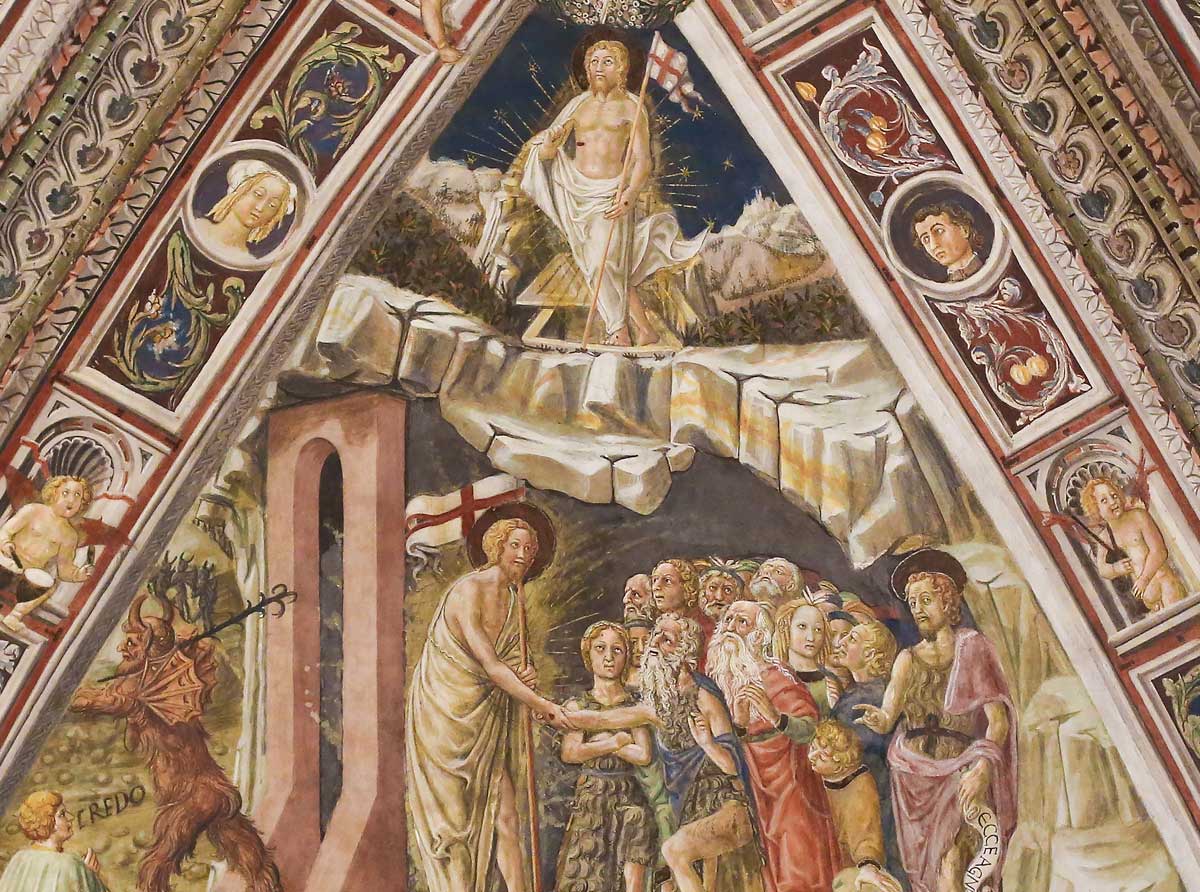
14.6—July/August 2001
The Transformed Relics of the Fall
on the Fulfillment of History in Christ by Patrick Henry Reardon
more from the online archives
calling all readers
Please Donate
"There are magazines worth reading but few worth saving . . . Touchstone is just such a magazine."
—Alice von Hildebrand
"Here we do not concede one square millimeter of territory to falsehood, folly, contemporary sentimentality, or fashion. We speak the truth, and let God be our judge. . . . Touchstone is the one committedly Christian conservative journal."
—Anthony Esolen, Touchstone senior editor





